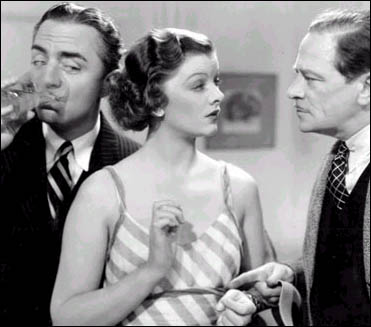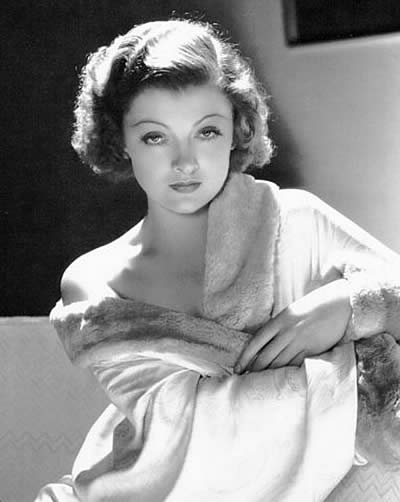But we won’t hold that against you, Myrna. Promise.
Myrna Adale Williams was discovered by no one less than Rudy Valentino when he saw a portrait of the young woman in a photographer’s studio. Soon she was Myrna Loy, and she was popping up in silent films as a femme fatale and a vamp. She blames it on her cheek bones, which, it’s true, are fabulous. She solidified her exotic reputation playing a number of Eurasian and Asian roles in silent films (despite the fact that she was clearly a white girl, gotta love the 1920s).

It took a long time to ditch her villainous reputation, even after the dawn of the talkies. But luckily, as she started getting the chance to speak on film, Myrna proved that she had skills other than looking mysterious and threatening. She was funny.
The role that proved this to the world was one of my favorite movies of all time. The Thin Man. Myrna scored the role of a life time in Nora Charles, the sardonic wife and investigative partner of Nick Charles, P.I.
It wasn’t an easy role to land, either. Turns out, parties have always brought out the inner frat boy in some guys. Especially the kind of parties that involve a lot of booze and convenient swimming pools. Director W. S. Van Dyke became taken with Myrna’s comic side after he pushed her into a pool during a Hollywood party. The cool, witty way she handled herself in that awkward, “Oh great, now I’m swimming in a dress in front of the neighbors,” moment convinced him that her sense of humor was worth exploring.

Louis B. Mayer refused to give Myrna the role of Nora at first, insisting that she was a dramatic actress, but apparently she did such a fine job getting out of that pool that Van Dyke insisted that she be cast. Thank god, because The Thin Man just wouldn’t be the same without her. Neither would any of the many other hilarious classics that Myrna made memorable with the same dry sense of humor that let her keep her wits, and her dignity, about her while she was climbing out of that pool.
Myrna didn’t just use her fabulous sense of humor to become one of the highest paid actresses in Hollywood. During World War II, she poured her energy into the Red Cross and raised funds for the war effort. She was so outspoken against Hitler, she made his Black List. She was also a vocal champion for the rights of African American actors and fought to help her African American colleagues have the chance to have fair and dignified work in film.
When she grew older and less active in film, Myrna took on the role of Co-Chairman of the Advisory Council of the National Committee Against Discrimination in Housing. In 1948, she also became a member of the U.S. National Commission for UNESCO. She was the first Hollywood celebrity to do so, paving the way for Angie and George and all the rest.
So what’s a comediva to learn from Myrna? So many things, but most uniquely: Always have a great sense of humor, even when a jerk pushes you into a pool. You can never tell who’s watching, or how the ability to laugh at yourself will pay off.
****
